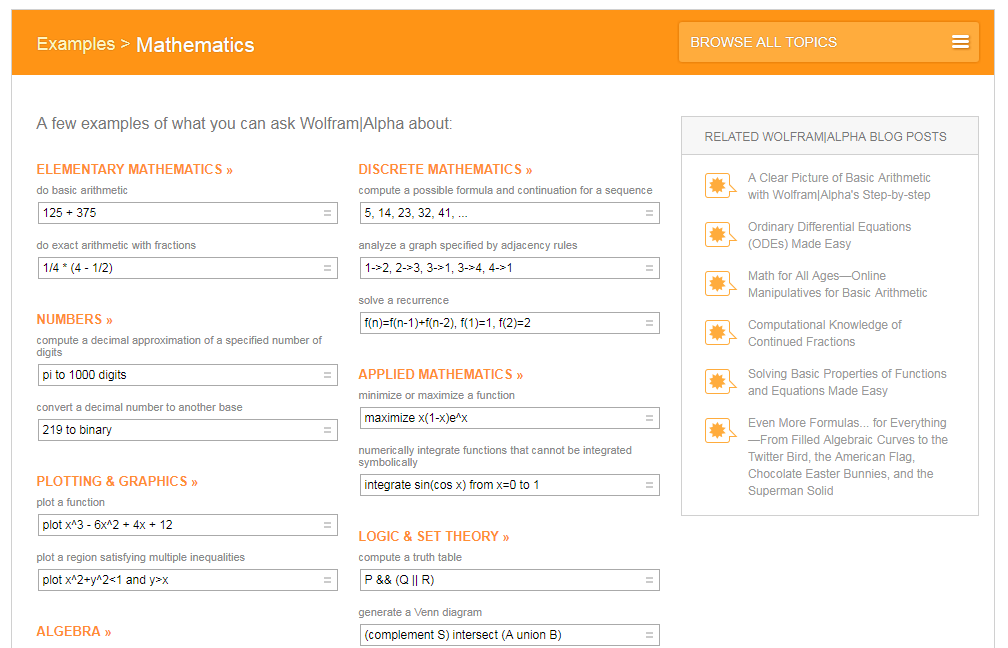

Symbolic expressions simply capture the concept of arranging symbols into trees. However, they can always be reduced to very simple data structures known as symbolic expressions. When humans want to communicate nontrivial structures, they use hierarchical nesting.Īcross different languages and domains, these structures, or trees, take many syntactic forms. A web page layout is built from sublayouts. A musical score is built of bars, which contain notes. A mathematical formula is built of subformulas. Symbolic Expressions: Combining Symbols into MeaningĪn English phrase is built of subphrases. As the above example makes clear, symbols are only the building blocks: the real action is with the arrangements of symbols. For example the symbol for Pi is generically just another symbol, but when it appears “within” the symbol N, it takes on its special numerical meaning:īecause Mathematica manipulates things abstractly, it is able to do more-precise computation than some other systems. They are inert, but can acquire meaning through combination with other symbols. For instance, JavaScript cannot perform the operation x + x unless x has a value:īy existing simply as distinct entities, symbols serve as lightweight carriers of meaning. This is in contrast to variables, which must stand for some other value or be considered an error. In programming, the defining feature of symbols is that they can stand for themselves. The point of symbols is to have distinct pieces of notation-be they words or mathematical functions or musical notes-which are then assigned an interpretation within the overall system. Symbols are the basic atoms of language and also of symbolic programming. We’ll see examples along the way, but let me first describe what these linguistic structures actually are. This is a powerful unification, making possible many useful computations that in other systems range from cumbersome to practically impossible. From a computation’s description, to how the computation executes, to how humans interface with the results, the exact same basic tree structure is used throughout. Symbolic programming uses linguistic structures as the foundation of all aspects of computation. But the execution of the program is typically oriented around an entirely different system of types and objects and likewise, the program’s output structure tends to resemble nothing particularly language-like. Linguistic structures are erected to describe the program.

The “language” part of most programming languages begins and ends with stage one. Our cognitive model of computation is typically a three-stage process: 1) describing the computation 2) executing that description and 3) outputting the results. What does it mean to have a human-language-oriented programming language? Symbolic programming is based on the concept of recasting core features of human language into a computationally active form. It’s the kind of idea that seems too powerful to explain in a single blog post, yet simple enough that I am tempted to try. The system uses webMathematica to display the dynamically changing contents, Mathematica to evaluate the symbolic expressions, based on rules described in custom Mathematica functions, and a J-Link program to retrieve the necessary data from a database.In this blog and elsewhere, you’ll often see the statement that some advanced Mathematica feature is just another application of symbolic programming. Based on the expression, the system shows a comment, a list of the next steps in the calculation and the explanation for any incorrect calculation step. The pages are linked to each other and inherit the student's expression from one page to the next. It also has an explanation page to help with calculation errors based on misconceptions, which beginners and slow learners tend to have. The system has two learning paths to accommodate various student learning styles: interactive exercises and step-by-step instructions. This paper describes a webMathematica-based tutoring system for algebraic calculations, such as simplifications of rational expressions, for high school students.


 0 kommentar(er)
0 kommentar(er)
